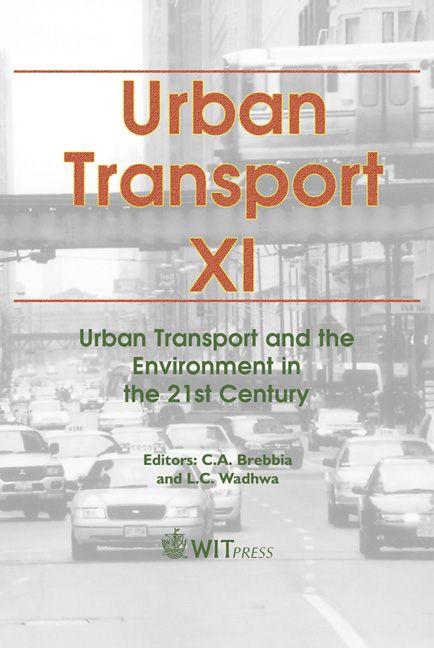Transportation Demand Management: A Case Study Of Ahmedabad City
Price
Free (open access)
Transaction
Volume
77
Pages
8
Published
2005
Size
876 kb
Paper DOI
10.2495/UT050621
Copyright
WIT Press
Author(s)
S. Mistry
Abstract
The city is one of the most important centers of 4500 years of Indus valley civilization. This unique city was named after Sultan Ahemadshah who founded it in 1411 AD. The city was originally bounded with a fort having 12 gates. Ahmedabad was the capital of Gujarat State, presently defined as a metropolitan city and an important industrial trade center of Gujarat State. Ahmedabad is the second largest textile city of India. Geographically, the city is divided into two parts beyond and above the non perennial river Sabarmati. The old city is defined as the eastern sector and beyond the river is defined as the western sector. The majority of industries are developed within the eastern side and the western sector is defined as the civic sector. Internal movement among the civic and industrial sectors is generating a very high intensity of traffic during the entire day and even late at night particularly within the central core of the city. With the provision of a modern infrastructure concept, the traffic management system can be improved with a permanent solution to integrate both the sectors. 1 Introduction The urban sprawl of Ahmedabad includes a total area of 310 sq.km. Out of which 190 sq.km. area falls under Ahmedabad Municipal Corporation (AMC) and 120 sq.km. area is under Ahmedabad urban Development Authority (AUDA). The tentative population of Ahmedabad city is 4.8 million. The entire city developed in radial shape and surrounded by highways connecting to other cities and states. Rajsthan State Highway Link, Capital Gandhinager Link, International Airport, various Industrial Estate, Diamond Industries, Baroda Express Highway,
Keywords





